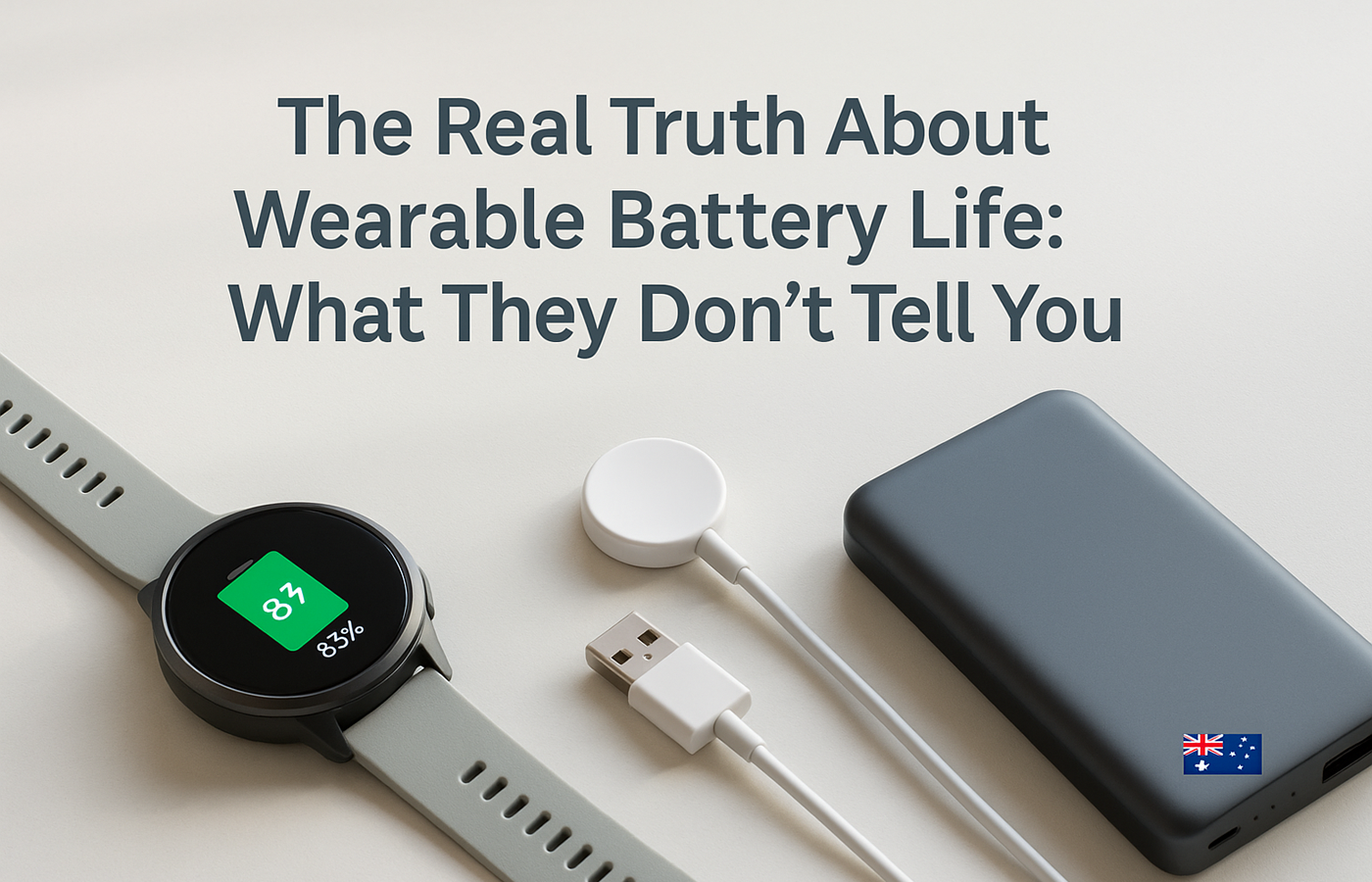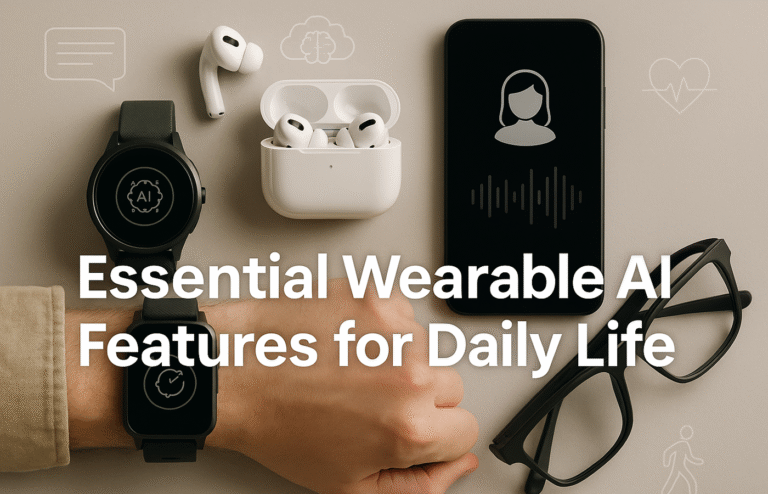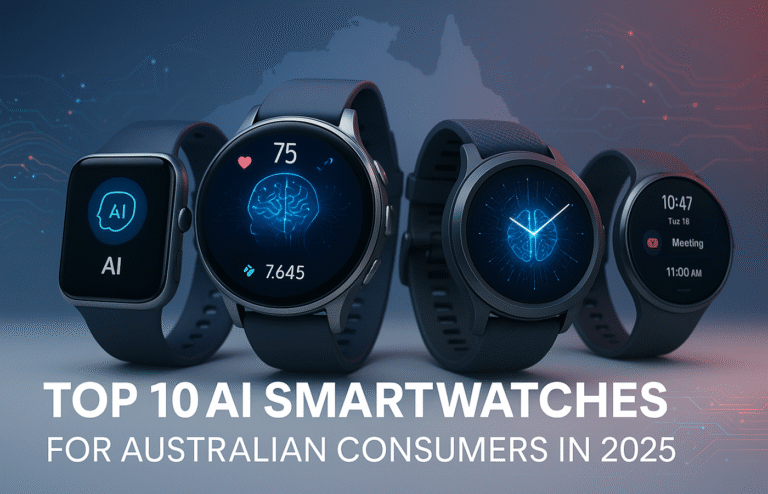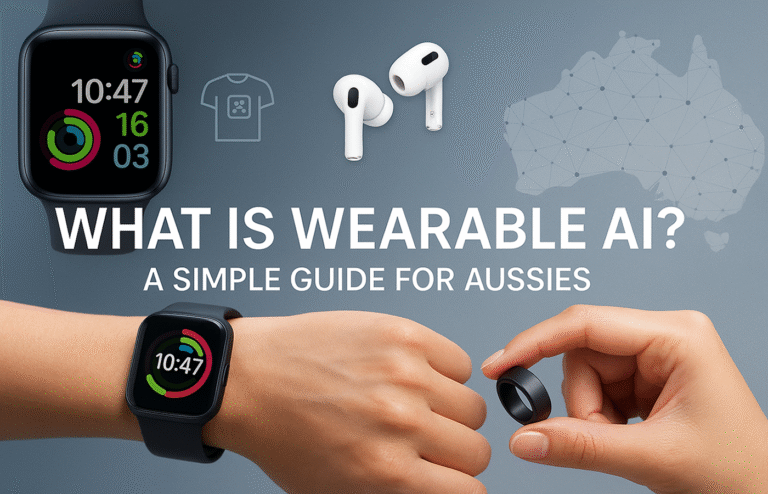The Real Truth About Wearable Battery Life: What Manufacturers Don’t Tell Australians
Manufacturers test under perfect laboratory conditions, but real Australian usage delivers 60-80% of advertised battery life due to extreme weather, active lifestyles, and heavy notification usage.
Australian Reality Check:
● Apple Watch Series 9 ($649): Claims 18 hours, actually delivers 8-12 hours with GPS and notifications
● Fitbit Charge 6 ($329): Promises 7 days, typically lasts 3-4 days with typical tracking
● High temperatures above 35°C reduce battery efficiency by 15-25% in Australian conditions
Biggest Battery Drains:
● Always-on displays consume 25-40% more power than raise-to-wake functionality
● GPS tracking during workouts drains 30-50% capacity in two-hour sessions
● Constant heart rate monitoring and third-party apps create steady background drain
Optimisation Tips:
● Use 20-80% charging rule and reduce screen brightness to 60-70%
● Filter notifications to essential apps only and use connected GPS when possible
The Real Truth About Wearable Battery Life: What They Don’t Tell You
If you’ve ever been frustrated by your smartwatch dying halfway through the day despite promises of “all-day battery life,” you’re definitely not alone. Manufacturers love to tout impressive battery specifications, but the reality of daily use often tells a completely different story. Understanding what actually affects your wearable’s battery performance can save you from disappointment and help you get the most from your investment.
Let’s dive into the honest truth about wearable battery life and discover practical strategies that actually work in Australian conditions.
Why Advertised Battery Life Is Often Fantasy
The “Lab Conditions” Myth
When manufacturers claim their smartwatch lasts “18 hours” or their fitness tracker runs for “7 days,” they’re testing under perfect laboratory conditions that rarely reflect real-world usage. These controlled environments typically involve minimal screen interaction, basic heart rate monitoring, and optimal temperature conditions around 22°C.
However, actual Australian usage patterns paint a very different picture. Between our intense summer heat, active outdoor lifestyle, and heavy notification usage, your device works significantly harder than those pampered lab models.
Real-World Usage vs Marketing Claims
Consider the Apple Watch Series 9, which Apple claims offers “18 hours of all-day battery life” with an RRP of approximately $649 AUD. In reality, Australian users frequently report 8-12 hours of actual usage when incorporating GPS workouts, constant heart rate monitoring, and regular app interactions.
Similarly, fitness trackers like the Fitbit Charge 6 (RRP around $329 AUD) promise “7 days of battery life,” yet many users find themselves charging every 3-4 days with typical Australian usage patterns including sleep tracking, workout monitoring, and smartphone notifications.
The Australian Battery Drain Factors
Climate Impact on Performance
Australia’s extreme weather conditions significantly affect battery performance in ways manufacturers rarely discuss. High temperatures above 35°C can reduce battery efficiency by 15-25%, whilst air conditioning transitions from scorching outdoor heat to cool indoor environments create additional stress on battery systems.
Furthermore, humidity levels across much of Australia can affect sensor accuracy, causing devices to work harder and consume more power to maintain reliable readings.
Lifestyle-Specific Drain Patterns
Outdoor Enthusiasts: GPS tracking during hiking, surfing, or cycling can drain batteries 50-70% faster than advertised. Add in bright sunshine requiring maximum screen brightness, and your “all-day” device might barely last a morning adventure.
Healthcare Workers: Twelve-hour shifts with constant heart rate monitoring, frequent hand washing (affecting sensor connectivity), and stress tracking can push devices beyond their advertised limits well before shift completion.
Office Workers: Even seemingly light usage including constant notification checking, regular health monitoring, and periodic app usage typically results in 30-40% shorter battery life than manufacturer claims.
Understanding Power-Hungry Features
The Biggest Battery Drains
Always-On Displays: Whilst convenient, always-on screens consume 25-40% more battery than traditional raise-to-wake functionality. However, many users find the convenience worth the trade-off.
GPS and Location Services: Continuous GPS tracking during workouts can drain batteries exceptionally quickly. A two-hour cycling session with GPS can consume 30-50% of total battery capacity on many devices.
Heart Rate Monitoring: Constant heart rate tracking, especially during exercise when readings become more frequent, significantly impacts battery life throughout the day.
Third-Party Apps: Popular apps like Spotify, social media platforms, and productivity tools often run background processes that steadily drain power even when not actively used.
The Sensor Struggle
Modern wearables pack numerous sensors into tiny devices, including accelerometers, gyroscopes, heart rate monitors, blood oxygen sensors, and temperature gauges. Each active sensor contributes to power consumption, and the more comprehensive your tracking preferences, the faster your battery depletes.
Additionally, poor sensor contact due to loose bands or sweaty conditions forces devices to work harder, consuming additional power whilst attempting to maintain accurate readings.
Practical Battery Optimisation Strategies
Smart Settings for Australian Conditions
Brightness Management: Reduce screen brightness to 60-70% for outdoor visibility whilst conserving power. Most devices offer automatic brightness adjustment, but manual control often provides better battery life.
Notification Filtering: Limit notifications to essential apps only. Each notification ping activates the screen and processes data, contributing to steady battery drain throughout the day.
GPS Strategy: Use connected GPS (via smartphone) instead of built-in GPS when possible. This approach provides accurate tracking whilst significantly extending battery life during longer activities.
Charging Best Practices That Actually Work
The 20-80 Rule: Charge your device when it reaches 20% and disconnect around 80% capacity. This practice significantly extends overall battery health over time, preventing the gradual capacity loss that forces earlier replacements.
Temperature Management: Avoid charging in direct sunlight or extremely hot conditions. Australian summers can push charging temperatures beyond optimal ranges, degrading battery chemistry faster than normal wear.
Overnight Charging Reality: Despite warnings about overnight charging, modern wearables include sophisticated charging management. However, removing devices from chargers once fully charged does help maintain long-term battery health.
Power-Saving Modes That Don’t Sacrifice Functionality
Most wearables offer various power-saving modes that can extend battery life without completely disabling essential features. These modes typically disable non-critical sensors whilst maintaining core functions like timekeeping, basic notifications, and emergency features.
Theatre Mode: Disables raise-to-wake and always-on display whilst maintaining all other functions. Perfect for meetings, movies, or situations requiring discrete device behaviour.
Workout Power Reserve: Some devices offer extended GPS tracking modes that sacrifice some accuracy for significantly longer recording times, ideal for ultra-marathons or multi-day hiking adventures.
Backup Solutions for Extended Adventures
Portable Charging Options
Power Banks: Dedicated wearable power banks (RRP $50-$150 AUD) can provide 3-5 full charges in a compact form factor perfect for camping or extended travel.
Solar Chargers: For serious outdoor enthusiasts, solar charging accessories (RRP $80-$200 AUD) can maintain device power during multi-day adventures, though Australian sun conditions vary significantly between seasons.
Car Charging: USB adapters and 12V charging solutions ensure devices stay powered during road trips and remote work situations.
Professional Shift Strategies
Healthcare workers and other professionals working extended shifts benefit from strategic charging approaches:
Mid-Shift Charging: Brief 15-30 minute charging sessions during breaks can provide enough power to complete long shifts without compromising tracking accuracy.
Backup Devices: Some professionals maintain two devices, alternating usage to ensure continuous monitoring without charging interruptions.
Recognising Battery Degradation Signs
When Replacement Becomes Necessary
Capacity Loss: If your device consistently provides less than 60% of original battery life despite optimisation efforts, battery replacement or device upgrade becomes necessary.
Charging Issues: Devices taking significantly longer to charge or failing to reach full capacity indicate battery chemistry degradation requiring professional attention.
Unexpected Shutdowns: Random shutdowns despite showing remaining battery percentage suggest internal battery damage requiring immediate replacement.
Cost-Effective Replacement Strategies
Before purchasing new devices, investigate battery replacement services. Many wearables offer battery replacement programs (typically $100-$200 AUD) that can extend device lifespan by 2-3 years, providing excellent value compared to full device replacement.
Additionally, consider timing upgrades around major sales events like Black Friday or end-of-financial-year promotions to maximise value when replacement becomes inevitable.
The Bottom Line: Setting Realistic Expectations
Understanding that manufacturers’ battery claims represent ideal rather than typical conditions helps set appropriate expectations for your wearable investment. Most quality devices provide 60-80% of advertised battery life under normal Australian usage patterns, which still delivers excellent value when properly managed.
Furthermore, implementing smart charging habits and optimisation strategies can significantly extend both daily usage and overall device lifespan, ensuring your wearable investment continues providing value throughout its intended lifecycle.
Remember, battery technology continues improving with each generation, so future devices will likely offer better performance. However, understanding current limitations and working within them ensures you get maximum enjoyment from your existing wearable whilst making informed decisions about future upgrades.








